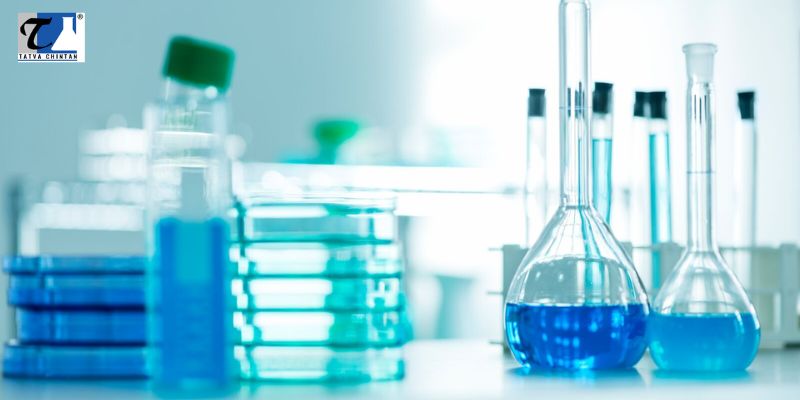Monoglyme: A Comprehensive Guide to Its Properties and Uses
Monoglyme is a popular aprotic liquid ether known as ethylene glycol, dimethyl glycol, or 1,2-dimethoxyethane. Due to its unique properties, it is used in many industrial processes. In this article, we discuss the properties and uses of Monoglyme.
Properties of Monoglyme
Monoglyme is miscible with liquid. Its physical and chemical properties affect how it reacts with other substances. Here are the properties of Monoglyme:
1.Physical state
At room temperature, Monoglyme is a clear, colorless liquid. It is a highly flammable and hygroscopic compound with a low boiling point of about 85 degrees Celsius. It also has a relatively low viscosity despite being liquid.
This colorless liquid is also a valuable solvent in various chemical reactions and processes because of its physical properties and high dielectric constant. When a non-aqueous, aprotic solvent is needed for particular reactions and syntheses, its liquid form makes it easier to use in laboratories and industrial processes.
2. Solubility
Monoglyme is a highly soluble, polar aprotic solvent with polar and nonpolar materials. It is adaptable in various applications due to its capacity to dissolve a broad range of compounds. Also, it is especially soluble in polar solvents like alcohol and water. This solubility promotes its use as an electrolyte component in lithium-ion batteries and organic synthesis.
Additionally, despite its polar nature, Monoglyme shows limited solubility in highly polar solvents, such as acetone. The solvent's solubility properties are critical when a suitable and efficient solvent is required for various chemical reactions, extractions, and industrial processes.
3. Reactivity
Due to its moderate reactivity, Monoglyme is primarily used as a solvent in different chemical reactions. Reactions involving alkali metals and organometallic compounds benefit significantly from using this aprotic, polar solvent. Monoglyme can promote reactions without changing the course of the reaction because it is stable and non-coordinating.
However, it must be handled cautiously due to its vulnerability to peroxides and possible explosive peroxide byproducts. Although it is chemically inert in most cases, its reactivity can be noticeable in some situations. Therefore, safety precautions must be followed when using it in a lab or an industrial setting.
4. Flammability
Monoglyme is a highly flammable compound. Due to its low flash point and the ether functional groups in its chemical structure, it is flammable. This compound is also a volatile solvent that can catch fire when it comes into contact with heat sources, sparks, or open flames.
Furthermore, handling and storage require caution. This way, users can avoid possible fire incidents. In industrial and laboratory settings, reducing the flammability risks associated with Monoglyme requires strict adherence to safety protocols, adequate ventilation, and appropriate storage conditions.
5. Uses of Monoglyme
Due to its unique properties, Monoglyme is used across various industries. Here are some of its applications across multiple industries:
6. Lithium-ion batteries
Monoglyme is essential in operating batteries. As a result, this ensures that it is used in the electrolyte solutions of lithium-ion batteries. This compound improves battery performance by establishing a steady and silent environment and improving ion flow between the anode and cathode.
Also, Monoglyme serves as a solvent and adds to the overall composition of the electrolyte. This means that the battery cell's ion conductivity is efficient. The stability, longevity, and general efficiency of batteries in various electronic devices, from portable electronics to electric cars, depend on these characteristics.
7. Electrochemistry
Monoglyme has a high dielectric constant, low viscosity, and a high dielectric constant. For this reason, it is used in electrochemical processes. Due to its characteristics, it is also the perfect solvent to mix electrolyte solutions for various electrochemical cells. These cells function more efficiently because they can dissolve electrolytes and promote ion transport.
This compound's solvent qualities improve the electrochemical system's stability and performance. This contributes to its application in lithium-ion batteries. The properties of the solvent make it ideal for establishing conditions that promote effective ion conductivity, an essential component of electrochemical reactions.
8. Extraction and purification
Monoglyme is widely used to extract and purify various compounds. Its ability to dissolve various organic and inorganic materials makes it essential in liquid-liquid extraction. Due to its versatility, it finds uses in chemical, pharmaceutical, and laboratory settings by making it easier to separate target compounds from complex mixtures.
Furthermore, Monoglyme can selectively solvate certain substances. Therefore, this makes it a vital tool in various industrial and scientific processes where exact purification is necessary for the following applications.
9. Polymer industry
Monoglyme is a widely used solvent in the polymer industry. Its function as a reaction medium for polymerization processes is crucial, and it plays a role that is more than just solvency. In doing so, this chemical compound facilitates the complex chemical reactions necessary to create various polymer materials by helping synthesize and form polymers.
Its versatility and compatibility with different polymer types make it essential for producing a wide range of polymeric products. Plastics, resins, and other materials vital to modern industry are some of its products.
Conclusion
Monoglyme is a solvent that can be used in various ways because of its versatile qualities. Its importance is well known for its role in chemical reactions, especially in the polymer industry. It is important to note that while Monoglyme has various applications, safety considerations, including proper handling and storage, should be observed due to its flammable nature and potential health hazards.






Comments
Post a Comment